Abstract
Soybeans (Glycine max L. Merr., cv Kingsoy) were grown on media containing NO3− or urea. The enrichments of shoots in K+, NO3−, and total reduced N (Nr), relative to that in Ca2+, were compared to the ratios K+/Ca2+,NO3−/Ca2+, and Nr/Ca2+ in the xylem saps, to estimate the cycling of K+, and Nr. The net production of carboxylates (R−) was estimated from the difference between the sums of the main cations and inorganic anions. The estimate for shoots was compared to the theoretical production of R− associated with NO3− assimilation in these organs, and the difference was attributed to export of R− to roots. The net exchange rates of H+ and OH− between the medium and roots were monitored. The shoots were the site of more than 90% of total NO3− reduction, and Nr was cycling through the plants at a high rate. Alkalinization of the medium by NO3−-fed plants was interrupted by stem girdling, and not restored by glucose addition to the medium. It was concluded that the majority of the base excreted in NO3− medium originated from R− produced in the shoots, and transported to the roots together with K+. As expected, cycling of K+ and reduced N was favoured by NO3− nutrition as compared to urea nutrition.
Full text
PDF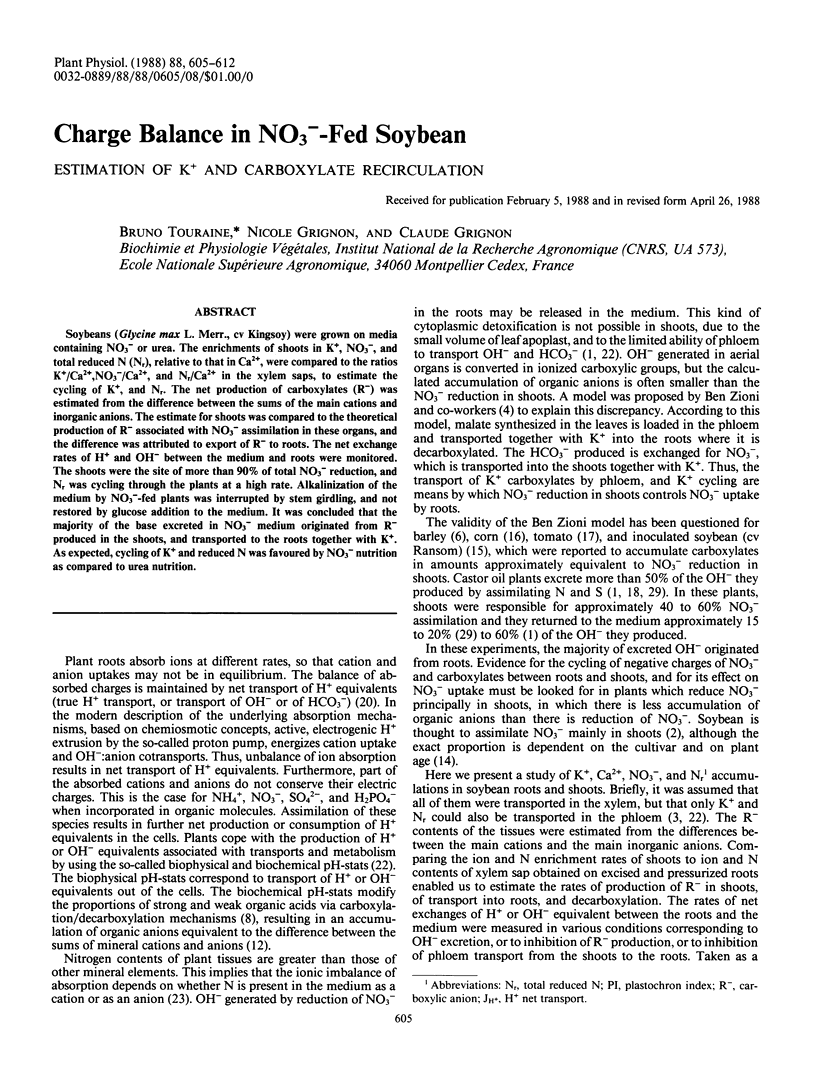
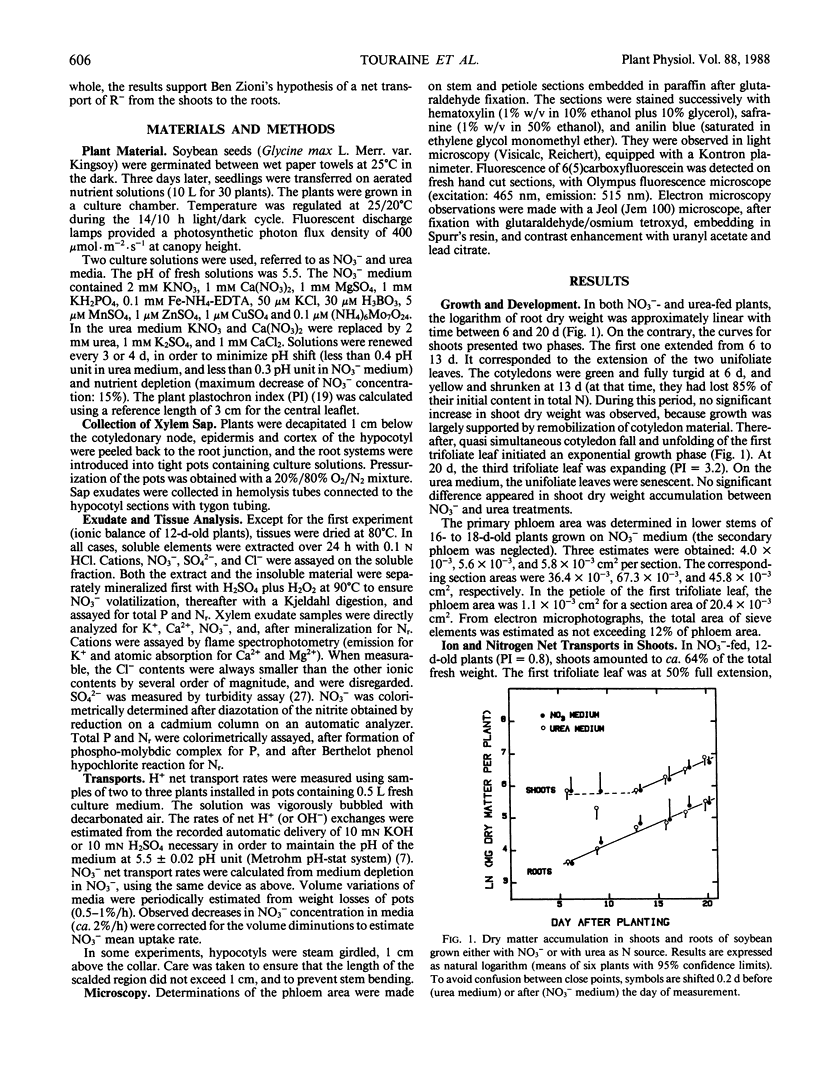
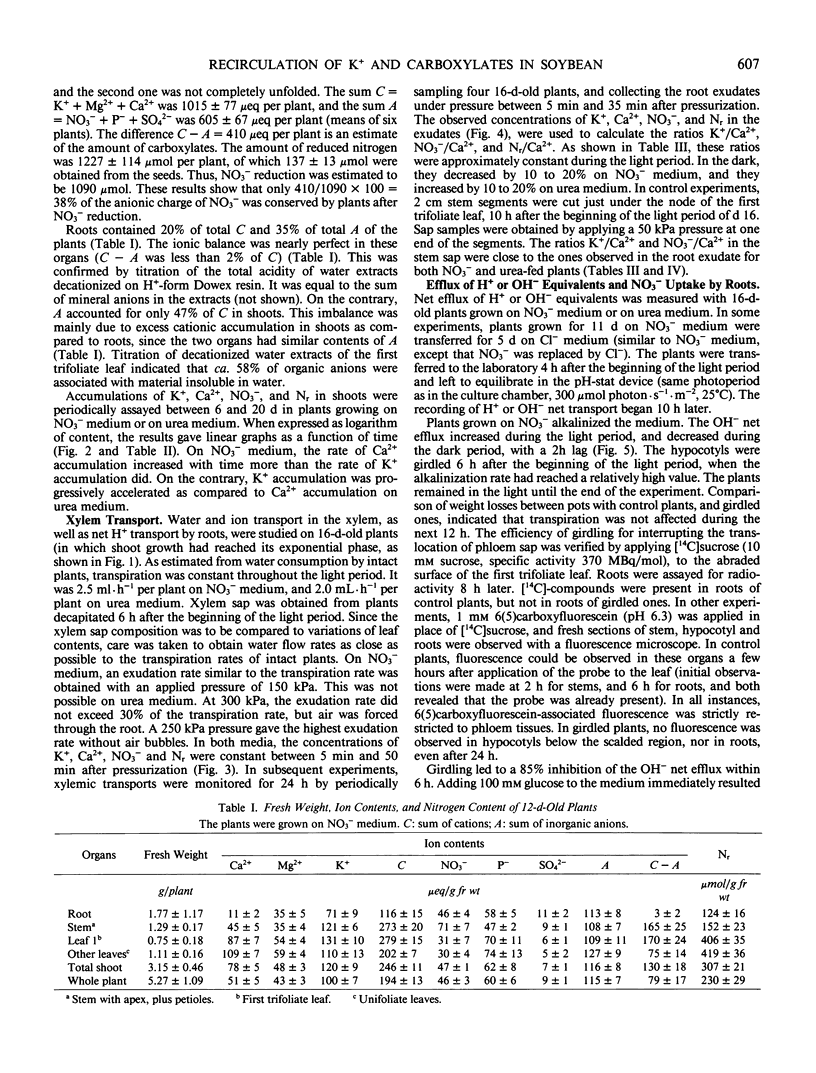
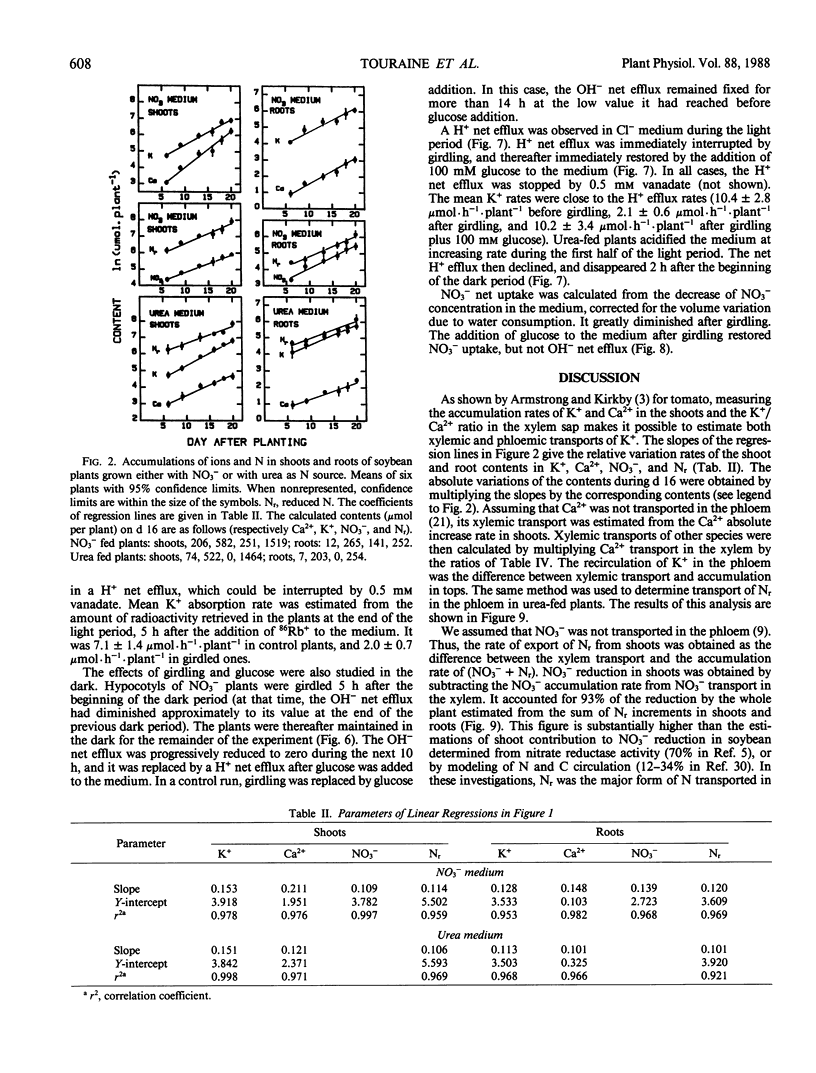
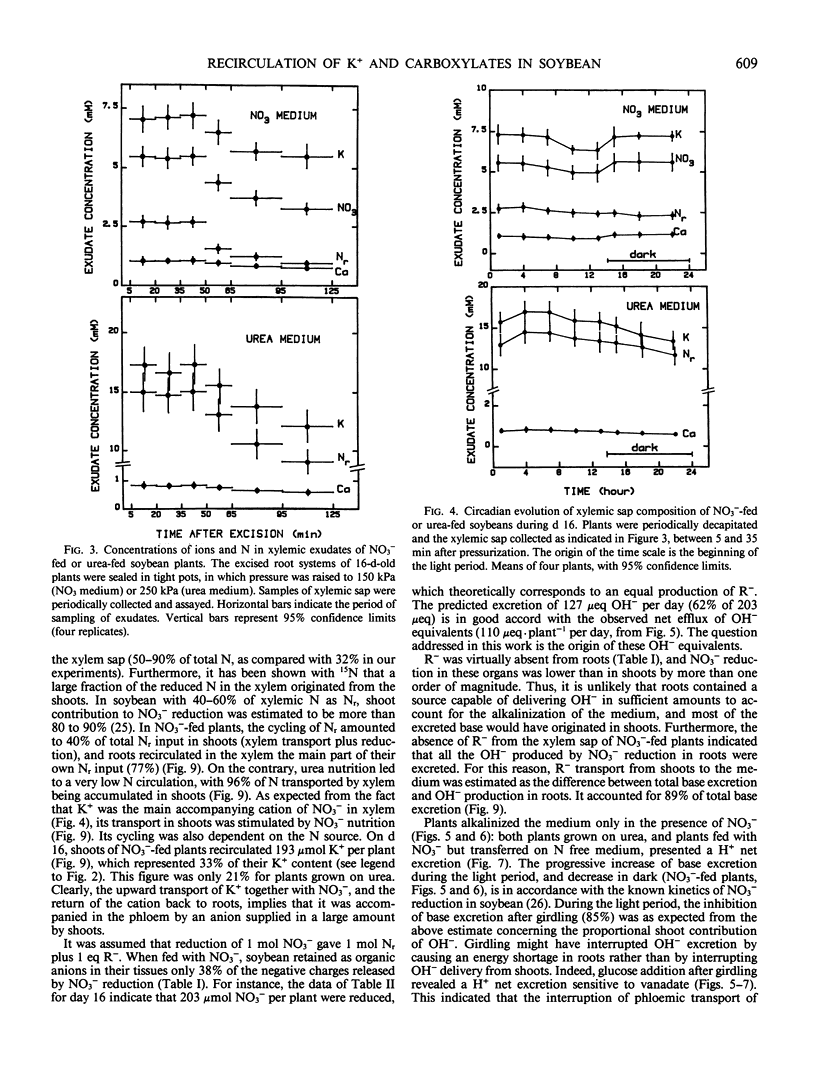
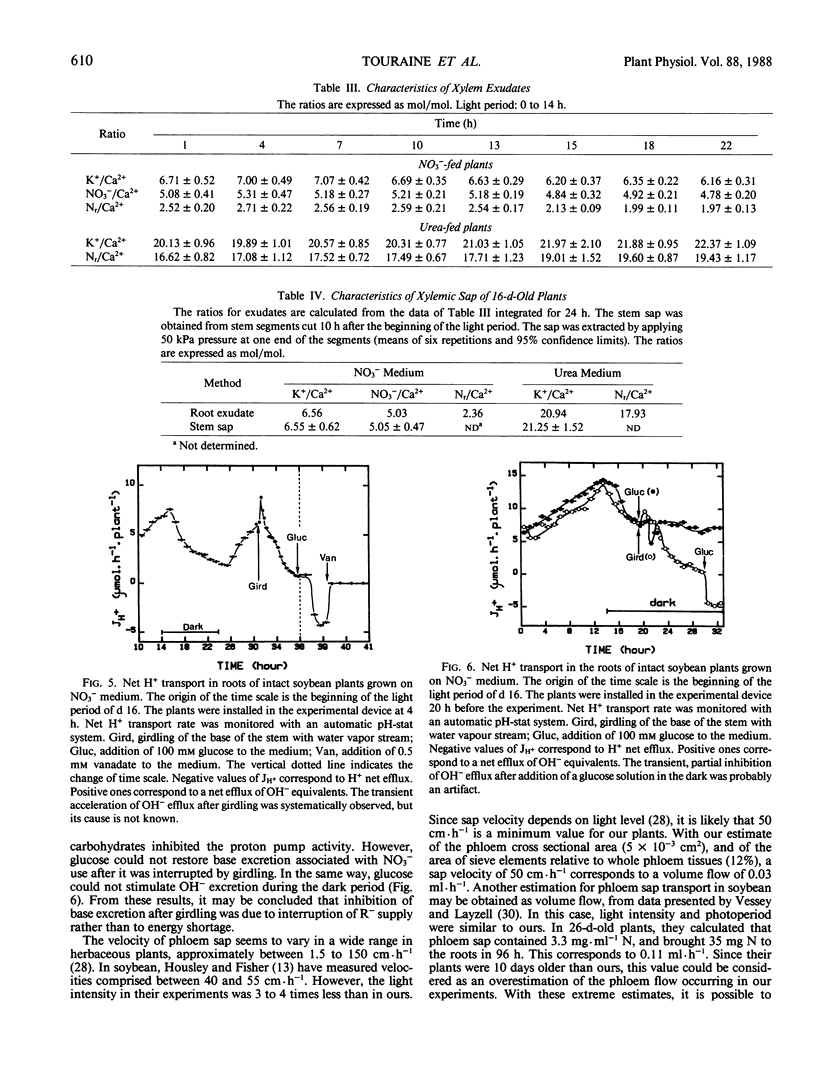
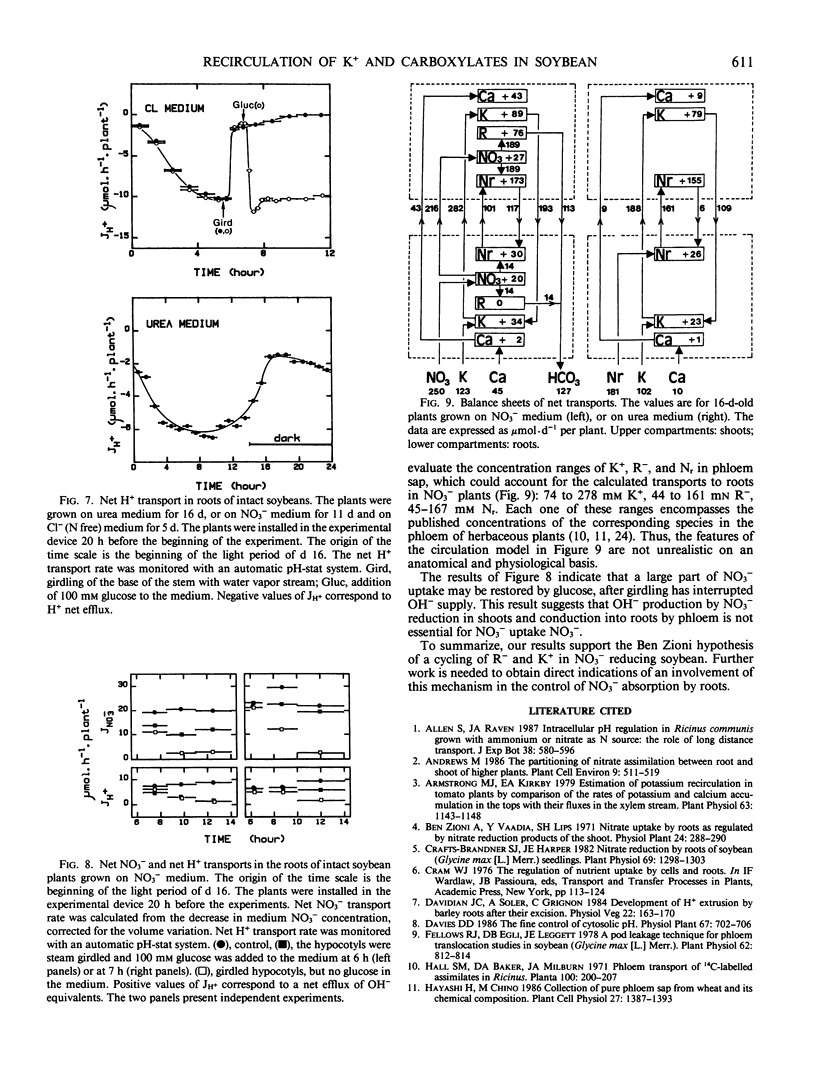
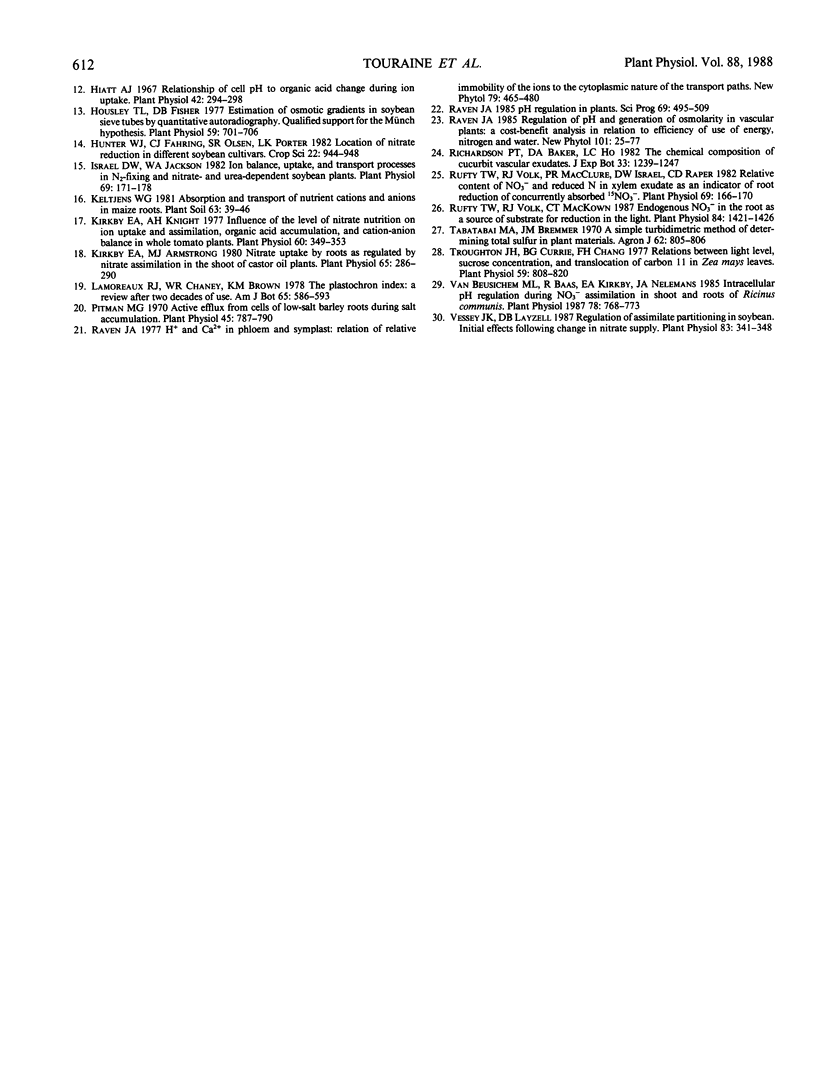
Selected References
These references are in PubMed. This may not be the complete list of references from this article.
- Armstrong M. J., Kirkby E. A. Estimation of potassium recirculation in tomato plants by comparison of the rates of potassium and calcium accumulation in the tops with their fluxes in the xylem stream. Plant Physiol. 1979 Jun;63(6):1143–1148. doi: 10.1104/pp.63.6.1143. [DOI] [PMC free article] [PubMed] [Google Scholar]
- Crafts-Brandner S. J., Harper J. E. Nitrate Reduction by Roots of Soybean (Glycine max [L.] Merr.) Seedlings. Plant Physiol. 1982 Jun;69(6):1298–1303. doi: 10.1104/pp.69.6.1298. [DOI] [PMC free article] [PubMed] [Google Scholar]
- Fellows R. J., Egli D. B., Leggett J. E. A Pod Leakage Technique for Phloem Translocation Studies in Soybean (Glycine max [L.] Merr.). Plant Physiol. 1978 Nov;62(5):812–814. doi: 10.1104/pp.62.5.812. [DOI] [PMC free article] [PubMed] [Google Scholar]
- Hiatt A. J. Relationship of Cell Sap pH to Organic Acid Change During Ion Uptake. Plant Physiol. 1967 Feb;42(2):294–298. doi: 10.1104/pp.42.2.294. [DOI] [PMC free article] [PubMed] [Google Scholar]
- Housley T. L., Fisher D. B. Estimation of Osmotic Gradients in Soybean Sieve Tubes by Quantitative Autoradiography: Qualified Support for the MUnch Hypothesis. Plant Physiol. 1977 Apr;59(4):701–706. doi: 10.1104/pp.59.4.701. [DOI] [PMC free article] [PubMed] [Google Scholar]
- Israel D. W., Jackson W. A. Ion balance, uptake, and transport processes in n(2)-fixing and nitrate- and urea-dependent soybean plants. Plant Physiol. 1982 Jan;69(1):171–178. doi: 10.1104/pp.69.1.171. [DOI] [PMC free article] [PubMed] [Google Scholar]
- Kirkby E. A., Armstrong M. J. Nitrate uptake by roots as regulated by nitrate assimilation in the shoot of castor oil plants. Plant Physiol. 1980 Feb;65(2):286–290. doi: 10.1104/pp.65.2.286. [DOI] [PMC free article] [PubMed] [Google Scholar]
- Kirkby E. A., Knight A. H. Influence of the level of nitrate nutrition on ion uptake and assimilation, organic Acid accumulation, and cation-anion balance in whole tomato plants. Plant Physiol. 1977 Sep;60(3):349–353. doi: 10.1104/pp.60.3.349. [DOI] [PMC free article] [PubMed] [Google Scholar]
- Pitman M. G. Active H Efflux from Cells of Low-salt Barley Roots during Salt Accumulation. Plant Physiol. 1970 Jun;45(6):787–790. doi: 10.1104/pp.45.6.787. [DOI] [PMC free article] [PubMed] [Google Scholar]
- Rufty T. W., Volk R. J., Mackown C. T. Endogenous NO(3) in the Root as a Source of Substrate for Reduction in the Light. Plant Physiol. 1987 Aug;84(4):1421–1426. doi: 10.1104/pp.84.4.1421. [DOI] [PMC free article] [PubMed] [Google Scholar]
- Rufty T. W., Volk R. J., McClure P. R., Israel D. W., Raper C. D. Relative Content of NO(3) and Reduced N in Xylem Exudate as an Indicator of Root Reduction of Concurrently Absorbed NO(3). Plant Physiol. 1982 Jan;69(1):166–170. doi: 10.1104/pp.69.1.166. [DOI] [PMC free article] [PubMed] [Google Scholar]
- Troughton J. H., Currie B. G. Relations between Light Level, Sucrose Concentration, and Translocation of Carbon 11 in Zea mays Leaves. Plant Physiol. 1977 May;59(5):808–820. doi: 10.1104/pp.59.5.808. [DOI] [PMC free article] [PubMed] [Google Scholar]
- Vessey J. K., Layzell D. B. Regulation of Assimilate Partitioning in Soybean : Initial Effects following Change in Nitrate Supply. Plant Physiol. 1987 Feb;83(2):341–348. doi: 10.1104/pp.83.2.341. [DOI] [PMC free article] [PubMed] [Google Scholar]
- van Beusichem M. L., Baas R., Kirkby E. A., Nelemans J. A. Intracellular pH Regulation during NO(3) Assimilation in Shoot and Roots of Ricinus communis. Plant Physiol. 1985 Aug;78(4):768–773. doi: 10.1104/pp.78.4.768. [DOI] [PMC free article] [PubMed] [Google Scholar]


